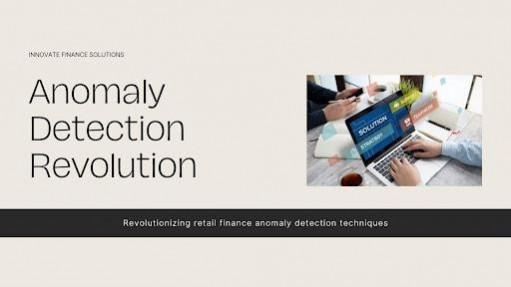
In the dynamic and increasingly complex landscape of retail fraud, innovative solutions for anomaly detection are essential. Bhupendrasinh Thakre's study explores pioneering methods that integrate data mining, machine learning, and artificial intelligence (AI) to tackle the unique challenges of fraud detection in the retail sector. The study highlights the complexities of financial transactions, regulatory compliance, and restricted data access.
Complexity of Anomaly Detection in Retail Finance
The retail sector's complexity, due to the intertwining of financial transactions and strict regulatory compliance, poses significant challenges in detecting anomalies. Traditional methods often fail due to the compartmentalization of financial data and the strict data access controls mandated by regulations like the General Data Protection Regulation (GDPR) and the Payment Card Industry Data Security Standard (PCI DSS).
Advanced Data Mining Techniques
Data mining techniques such as association rule mining and sequential pattern mining are employed to uncover hidden patterns and relationships within fragmented financial data. These techniques, proven successful in various fields like healthcare and telecommunications, are adapted to the retail sector to identify anomalies in financial transactions.
Machine Learning Models
Machine learning methods, including support vector machines (SVM) and random forests, are integrated into the framework to develop robust and adaptive models for anomaly detection. These models can learn from historical data and adjust to emerging fraud trends, maintaining their effectiveness in a dynamic threat landscape.
Artificial Intelligence Innovations
Artificial intelligence (AI) techniques, particularly deep learning and natural language processing (NLP), are utilized to analyze unstructured data sources such as social media posts and customer reviews. This comprehensive approach enables the detection of potential fraud risks that may not be evident from structured financial data alone.
Privacy-Preserving Methods
The framework incorporates privacy-preserving techniques such as homomorphic encryption and differential privacy to comply with stringent regulatory requirements. These methods ensure that sensitive financial data can be analyzed without compromising customer privacy, facilitating the creation of compliant anomaly detection models.
Comprehensive Dataset
The study analyzes a dataset comprising over 10 million transactions spanning over three years, providing a comprehensive view of customer behavior and transaction patterns. This extensive dataset enhances the accuracy and reliability of the anomaly detection models.
Evaluation and Results
The proposed anomaly detection framework was rigorously evaluated using a holdout dataset of 2.5 million transactions, maintaining the same proportion of legitimate and fraudulent transactions as the original dataset. Standard metrics such as precision, recall, and F1-score were employed to assess the performance of the framework.
Isolation Forest
The Isolation Forest algorithm, an unsupervised learning method, demonstrated high effectiveness in identifying anomalies in high-dimensional financial data. The algorithm achieved a recall of 0.92 and an F1-score of 0.91, indicating its capability to detect fraudulent transactions while minimizing false positives accurately.
Autoencoder
The deep learning-based autoencoder also showed promising results, with an F1-score of 0.91 and a recall of 0.95. The autoencoder's ability to identify anomalies based on reconstruction errors proved valuable in detecting fraudulent activities.
Expert Systems
Rule-based expert systems, developed in collaboration with retail, finance, and compliance experts, complemented the machine learning models by capturing domain-specific nuances and regulatory requirements. These systems effectively identified fraud patterns that data-driven methods might have missed.
Combined Framework
The combined framework, which integrates data mining, machine learning, AI, and expert systems, achieved superior performance with an overall precision of 0.93, a recall of 0.96, and an F1-score of 0.94. This holistic approach demonstrated the benefits of combining multiple anomaly detection techniques.
Bhupendrasinh Thakre's study presents an innovative approach to anomaly detection in the retail industry, addressing the challenges of restricted data access, regulatory compliance, and complex financial transactions. The proposed framework significantly enhances fraud detection capabilities, offering a robust and flexible solution for the retail sector. Future research should focus on validating the framework across diverse datasets and industries.

















